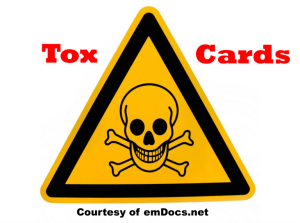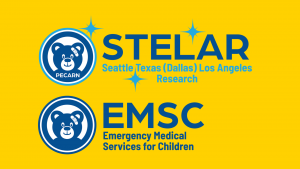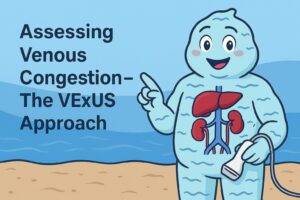Author: Amy E. Betz, MD (Acting Assistant Professor, Harborview Medical Center, Seattle, WA) // Edited by: Alex Koyfman, MD (@EMHighAK, EM Attending Physician, UT Southwestern Medical Center / Parkland Memorial Hospital) & Justin Bright, MD (@JBright2021)
Introduction
Death after discharge from the Emergency Department (ED) is an uncommon but nonetheless highly concerning event. Discharge from the ED, on the other-hand, is a frequent event, with over 80% of ED visits culminating in discharge to home or non-acute care. (1) That number may be increasing with more pressure to find alternatives to inpatient admissions. (1,2) Discharge from the ED is a vulnerable time for patients, and it is a high-stakes time for both patients and providers.
In the US, the prevalence of death within 7 days of ED discharge is estimated to be 30-50 per 100,000 discharges based on retrospective data. (3,4) Many of the deaths after ED discharge are not unexpected (e.g. patient enrolled in hospice who dies) or are clearly unrelated to the ED visit (e.g. patient treated for urinary tract infection who then dies from a penetrating chest wound). But about half are quite unexpected and the cause of death may be related to a disease process or problem during a proximate ED visit. (3)
What can we learn from this group of patients? Are there patterns or clues to identify patients at higher risk for death after discharge? Are there things we can do different or better? How should we approach unexplained abnormal vital signs? Should certain symptoms or co-morbidities elevate our concern?
Fortunately there is a small but growing body of research around this topic. Here we will review factors associated with early death after discharge and strategies to identify high-risk patients and avoid pitfalls in the decision-making around ED disposition.
Factors associated with early death after discharge
Both patient factors and process of care factors have been identified in early death after ED discharge (See Table 1). (3,5) Patient factors associated with death within 7 days of ED discharge include older age, male gender, abnormal vital signs, recent fall in elderly, atypical presentation of a low-prevalence condition, chronic disease with decompensation, and/or mental disability, psychiatric problem or substance abuse. (3,5)
Process of care factors (i.e. characteristics of the care the patient received during an ED visit) associated with death within 7 days of ED discharge include discrepancy in history of present illness, incomplete physical exam, misdiagnosis due to a narrow differential diagnosis, underestimation of sickness level despite concerning evaluation, or admission plan changed. (5)
| Patient Factors | Process of Care Factors |
| Older age | Discrepancy in history of present illness |
| Male gender | Incomplete physical exam |
| Abnormal vital signs | Misdiagnosis due to a narrow differential diagnosis |
| Recent fall in elderly | Underestimation of sickness level despite concerning evaluation |
| Atypical presentation of a low-prevalence condition | Admission plan changed |
| Chronic disease with decompensation | |
| Mental disability, psychiatric problem or substance abuse |
Strategies to identify high-risk patients and avoid pitfalls in ED disposition:
Consider the patient’s age
The overall risk of death after ED discharge increases exponentially with age. (4,6) Over the age of forty, the odds of death triples from each age group 40-59, 60-79, and >80. (4) Interestingly, one study found that mean age in unexpected and related to proximate ED visit deaths was 48.8 years, whereas mean age in expected deaths was 56.2 years. (3) This may be explained in part by older patients having multiple co-morbidities. Older patients warrant careful evaluation and a lower threshold to admit or identify other methods for interval evaluation shortly after discharge from the ED.
Do your due diligence with persistent abnormal vital signs, particularly tachycardia
Tachycardia is the most common abnormal vital sign that persists despite interventions in this population of patients. (3,5) In one study, abnormal vital signs occurred in 83% of unexpected and related to proximate ED visit deaths, with tachycardia occurring in 83% of those cases. (3) By comparison, tachycardia was less common in unexpected unrelated deaths. (3)
Interestingly, deaths associated with abnormal vital signs also frequently have one of the following themes present as well: atypical presentation of a low-prevalence condition, chronic disease with decompensation, and/or mental disability, psychiatric problem or substance abuse. (3) If vital signs do not normalize or return to a documented baseline after interventions, look for presence of additional factors to help risk-stratify these patients. In some cases, monitoring the patient for an additional period of time in the ED could be considered to allow time for a serious acute illness to declare itself in patients who may have presented early in the disease course.
View mechanical falls in elderly as an important red flag
A fall occurring within the week prior to an ED visit in patients age 65 years or older is associated with early death after discharge. (5) Falls in the elderly are one of the top causes of trauma-related complaints in EDs. (7) Studies show that a fall predicts an increased likelihood of one-year mortality. (8,9)
In the usual adult population, a mechanical fall is considered to be reassuring. A history with a clearly described mechanical fall often alleviates the concern for a syncope or seizure event preceding the fall and obviates the need for additional medical workup. However, in the older adult population, mechanical falls can be a clue about a patient’s level of deconditioning, underlying poor health, or inability to comply with assistive devices such as canes and walkers. The frequency and implications of falls in this population suggests a need to pursue a better understanding of patients’ physical state and ability to complete ADLs before having them return to a potentially unsafe situation.
Keep an open mind, so as not to miss an atypical presentation of disease
One study found that atypical presentation of relatively low-prevalence disease was commonly associated with early death after discharge, occurring in 38% of these deaths. (3) For example, that study reported cases of pulmonary embolism with dizziness or back pain as the predominant complaints, without complaint of chest pain or shortness of breath. Careful consideration of a patient’s risk factors for particular disease is recommended before ruling out based on presentation with atypical symptoms.
Indeed, this issue also highlights the importance of careful history-taking, including open-ended questions about the reason for presentation and events leading up to the ED visit. In addition, a savvy review of systems can save time, by uncovering additional information that might alter the course of diagnostic investigation. This is challenging with a well-educated and self-aware patient, let alone a more difficult situation involving a patient with non-English language, cognitive impairment, mental health disease or substance abuse. With these highly challenging patients it is even more important to maintain an open mind and read between the lines of what these patients may or may not be able to articulate.
Do your due diligence with review of medical records
Whenever possible, review the nursing chart, any available recent outpatient visits, or telephone notes to gain insight into the patient’s presentation. One study reported a common finding of conflicting documentation of the history of present illness between the ED provider note and an outpatient note preceding the ED visit, or nurse note during ED visit. (5) There was no evidence that the ED provider saw these other notes thus although this information was in the chart, the provider did not have the benefit of this information when formulating a diagnostic plan. This suggests that reviewing documentation (particularly nursing and/or same day outpatient notes) and revisiting discrepancies to clarify history of present illness may be more important, and a better use of time, than we may think.
Summary
Unexpected early death after discharge is an adverse outcome that we may be able to impact without radical changes to our practice. With increased insight into the factors associated with death within 7 days of ED discharge there are some strategies we can employ to identify high-risk patients and avoid pitfalls in ED disposition.
References / Further Reading
- CDC/NCHS, National Hospital Ambulatory Medical Care Survey: 2011 Emergency Department Summary Tables, Table 24.
- CDC/NCHS, National Hospital Ambulatory Medical Care Survey: 2010 Emergency Department Summary Tables, Table 24.
- Sklar DP, Crandall CS, Loeliger E, et al. Unanticipated death after discharge home from the emergency department. Ann Emerg Med.2007 Jun;49(6):735-45.
- Gabayan GZ, Derose SF, Asch SM, et al. Patterns and predictors of short-term death after emergency department discharge. Ann Emerg Med.2011 Dec;58(6):551-558.
- Gabayan GZ, Sun BC, Asch SM, et al. Qualitative factors in patients who die shortly after emergency department discharge. Acad Emerg Med.2013 Aug;20(8):778-85.
- Gunnarsdottir OS, Rafnsson V. Death within 8 days after discharge to home from the emergency department. Eur J Public Health.2008 Oct;18(5):522-6.
- Niska R, Bhuiya F, Xu J. National Hospital Ambulatory Medical Care Survey: 2007 emergency department summary. Natl Health Stat Report.2010 Aug 6;(26):1-31.
- King MB, Tinetti ME. Falls in community-dwelling older persons. J Am Geriatr Soc.1995 Oct;43(10):1146-54.
- Donald IP, Bulpitt CJ. The prognosis of falls in elderly people living at home. Age Ageing.1999 Mar;28(2):121-5.








